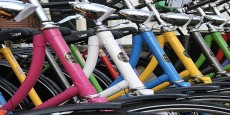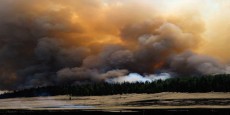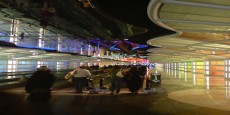Over at Yale Environment 360, David Owen (who’s a staff writer for The New Yorker, by the way…) lays out some stats as to why New York City should probably get renamed the Big Green Apple:
2. New Yorkers consume far less electricity than everyone else in the United States: 4,700 kWh per year versus 11,000 kWh on average in the rest of the country. I even think that NYC stat is slightly high, based on what I’ve seen coming out of Con Ed, but in any case… If New York City were ranked as a state it would have the lowest per-capita energy use in the nation.
3. NYC accounts for nearly one-third of all public transit miles traveled in the US. 82% of Manhattan residents travel to work by public transit, bicycle, or foot — ten times the rate for the rest of the nation, eight times that of Los Angeles and sixteen times that of Atlanta.
4. The Big Apple boasts the lowest rate of automobile ownership in the nation: 54% of households in the city as a whole don’t own a car, with 77% of Manhattanites car-less.
5. Talk about lowering you carbon footprint: New Yorkers have the smallest carbon footprint in the nation — 7.1 metric tons versus about 20 metric tons average for the nation, with manhattanites have even lower than the city as a whole. That figure compares favorably with those normal in Europe and Japan, by the way
Population Density = Greener Without Thinking
The thing that’s really important to remember about all these figures is that most of the stats aren’t based out of personal conviction or effort. Rather, they are a necessary outcome of living in high density urban spaces, more than any other factor — much in the same way that the average resident of Berlin, Zurich, Rome or Barcelona has a comparatively low carbon footprint.
As Owen says,
Population density also lowers energy and water use in all categories, constrains family size, limits the consumption of all kinds of goods, reduces ownership of wasteful appliances, decreases the generation of solid waste, and forces most residents to live in some of the world’s most inherently energy-efficient residential structures: apartment buildings.
The original article goes on to speculate on the paradox of Muir and Thoreau actually spreading the intellectual seeds that would lead to spreading suburbia and loving wilderness to death. Check it out: Greenest Place in the US? It’s Not Where You Think
HIT FROM: Treehugger.com












